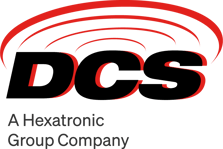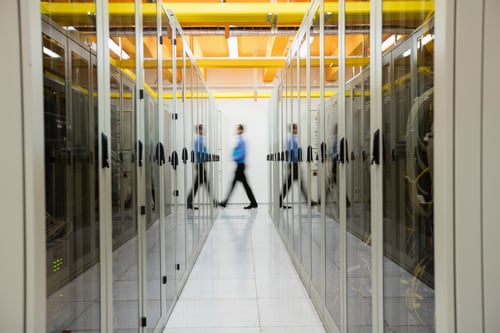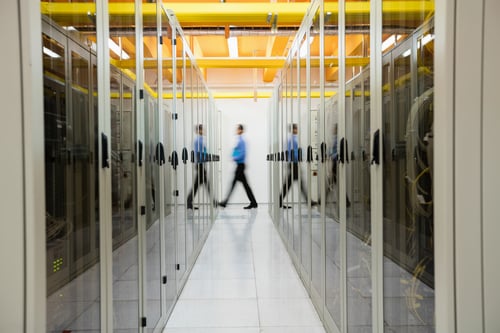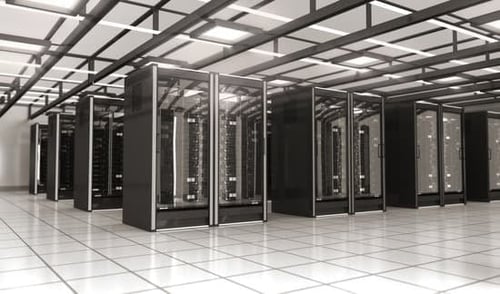Data Centers: Critical Infrastructure that Keeps Technology Running

Our concept of data centers has shifted from the early days of computing when a “data center” was simply a “computer room” where a massive mainframe – some weighing 30 tons! – was housed. Data centers kept on evolving, adapting to colocation services, virtual servers, cloud computing and edge networks. “M
Data Center Definition: Simple … and Complex
In the simplest of terms, a data center can be defined as the physical space or building designed to house servers, routers, switches and other core computing and networking technology.
routers, switches and other core computing and networking technology.
Of course, the reality is much more complex with Cisco saying: “In this era, data exists and is connected across multiple data centers, the edge, and public and private clouds. The data center must be able to communicate across these multiple sites, both on-premises and in the cloud. Even the public cloud is a collection of data centers. When applications are hosted in the cloud, they are using data center resources from the cloud provider.”
David Cappuccio and Henrique Cecci in the 20202 Gartner report “Your Data Center May Not Be Dead, but It’s Morphing” estimate that “By 2025, 85 percent of infrastructure strategies will integrate on-premises, colocation, cloud and edge delivery options, compared with 20 percent in 2020”.
Today’s data center can range from The Citadel/Tahoe Reno 1 Data Center in Nevada, which upon completion will be the largest colocation data center campus in the world, to new micro data centers comprised of suitcase-sized computing stacks.
The Citadel/Tahoe Reno 1 Data Center facility, by the way, will feature a data center spread over a mind-boggling 17.4 million square feet with 850 MW of power consumption.
Data Center Core Components
While the definition of a data center may be a moving target, there are still some core components which we can associated with a data center:
- Servers
- Router
- Switches
- Firewalls
- Storage systems
- Application delivery controllers
This technology combines to manage and store critical data and applications. The three prongs of a data center can be viewed as:
- Network Infrastructure: Physical and virtual servers connect the data center – and its content – internally and externally to end-users.
- Storage Infrastructure: Data is stored, making security a top concern for the modern data center.
- Computing Resources: Data center fuels computing applications by providing connectivity, storage, memory, and processing power.
“Data centers are at the center of modern software technology, serving a critical role in the expanding capabilities for enterprises,” writes Stuart Miniman in “The Data Center: Past, Present and Future”.
Data Centers Rapid Growth Fueled by Emerging Tech
Advancement needed to support AI, machine learning and deep learning technologies, as well as the move to hyperscale data centers, is fueling a worldwide spending spree.
Technavio estimates that the global data center IT infrastructure market will grow by $270.51 billion during 2020 to 2024, a rate of 18 percent per year.
Statista breaks down data center spending between the following categories:
- IT data center spending will be an estimated $237 billion in 2021.
- Enterprise data center spending was an estimated $89 billion in 2020.
- Cloud IT infrastructure spending was an estimated $74 billion in 2020.
In 2019, there were an estimated 8 million data centers in the world.
That number is likely to shrink with consolidation as on-premise data centers give way to colocation and cloud options with Statista estimating about 7.2 million data centers worldwide in 2021, down from an all-time high of 8.55 million in 2015.
Types of Data Centers
Today’s data centers range from small edge data centers to massive hyperscale data centers that would make the first computer rooms look like a broom closet.
Here are different types of data centers:
- Onsite Data Center: Located directly inside a company’s building or on their campus these are sometimes called enterprise data centers. Also called managed services data centers when a third party owns the equipment and manages it on behalf of company. Location provides for easy access for maintenance, troubleshooting, upgrades and provides for control and security of the data.
- Colocation Data Center: This facility leases or rents space to operate data centers for multiple companies. The costs for cooling, security and monitoring are shared by the different companies. This option can save companies on the cost of on-site personnel and equipment costs. Wholesale colocation data centers provide more of a blank canvass – offering space only for companies to set up their own data centers.
- Hyperscale Data Centers: Operating on the same concept as colocation data centers, hyperscale data centers are massive site which offer clients the space for continual expansion. Hyperscale data centers may house hundreds of thousands, and even millions, of servers.
- Edge Data Centers: On the opposite end of the scale from hyperscale data centers are edge data centers which are smaller data centers placed strategically close to where the data is created and consumed. Some edge data centers rely on micro data center technology which places a limited number of servicers in containerized architecture. Edge data centers may be “on-site” they are typically managed by offsite services.
- Telecom Data Centers: Large operators such as AT&T or Verizon have their own data centers that are built and operated by their own staff. Regional ISPs may also own and operate their own data centers, offering enterprise and smaller clients colocations, cabinets, managed servers, and other bandwidth services.
- Cloud Data Center: These data centers are operated by cloud service providers such Amazon Web Services (AWS), Microsoft (Azure) and IMB Cloud.
Data Center Tiers Explained
The data center industry uses a tier system to describe the different kinds of data centers. The tiers range from Tier 1 to Tier 4 with Tier 1 being the lowest level of infrastructure and Tier 4 being the most complex.
Hewlett Packard Enterprise (HPE) describes each tier in detail as:
- Tier 1: Facility has a single path for power and cooling and few, if any, redundant and backup components. Expected uptime of 99.671 percent (28.8 hours of downtime annually).
- Tier 2: Facility has a single path for power and cooling and some redundant and backup components. Expected uptime of 99.741 percent (22 hours of downtime annually).
- Tier 3: Facility has multiple paths for power and cooling and systems in place to update and maintain it without taking it offline. Expected uptime of 99.982 percent (1.6 hours of downtime annually).
- Tier 4: Facility is built to be completely fault tolerant and has redundancy for every component. It has an expected uptime of 99.995 percent (26.3 minutes of downtime annually).
HPE warns that, “although a Tier 4 data center is more complex than a Tier 1 data center, this does not necessarily mean it is best suited for a business's needs. While investing in Tier 1 infrastructure might leave a business open to risk, Tier 4 infrastructure might be an over-investment.”
Contact Data Center Systems today to find out how we can deliver complete end-to-end solutions for your data center needs.
Subscribe to News
LATEST NEWS
Tuesday August 24, 2021
Wednesday November 8, 2023







